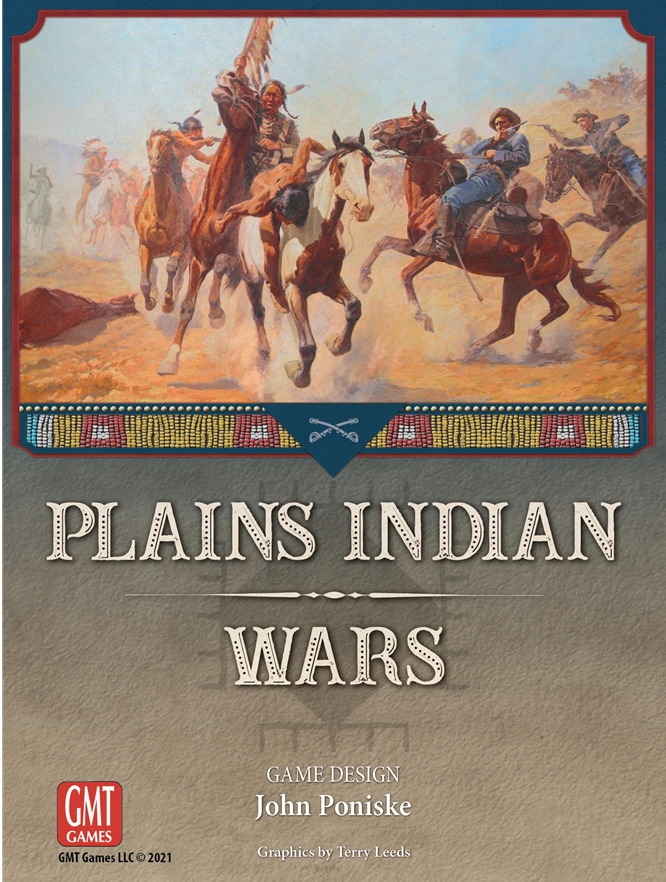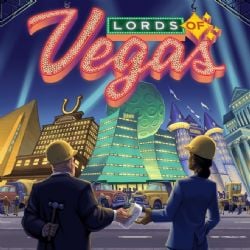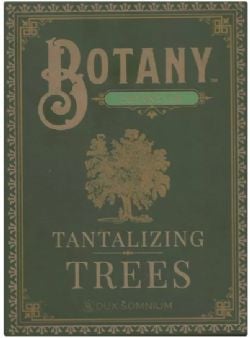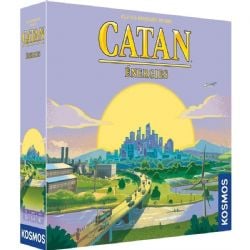Our products are now delivered by

SKU: 0817054012275
Out of stock
51.51 €
This item is out of stock in all of our stores, however you can subscribe to in-stock notifications.
This item is out of stock in all of our stores, however you can subscribe to in-stock notifications.
Our products are now delivered by

Stock in Store
| Stores | Quantities | ||
|---|---|---|---|
|
Not available
|
QUÉBEC | 0 | |
|
Not available
|
LAVAL | 0 | |
|
Not available
|
ST-BRUNO | 0 | |
|
Not available
|
SHERBROOKE | 0 | |
|
Not available
|
TROIS-RIVIÈRES | 0 | |
|
Not available
|
LÉVIS | 0 | |
|
Not available
|
OTTAWA | 0 | |
|
Not available
|
POINTE-CLAIRE | 0 | |
Description
The Great Plains in the latter half of the 19th century was a cultural battleground. The Native way of life was under siege by an avalanche of invaders seeking land and progress. Plains Indian Wars reduces this monumental and catastrophic series of conflicts to its basic elements: A settler surge via long snaking wagon trains, the building of the Transcontinental Railroad, east and west, and the cavalry sent to protect them all. At the same time, Plains Indian Wars seeks to offer the Native-American player the opportunity to unite earlier, hold their own and perhaps even prevent European-American success.
Plains Indian Wars can be played by 1-4 players, but is best played as a two-player game. Game play averages 60-90 minutes.
The Plains Indian Wars Map board centers on the Great American Plains between the Mississippi River in the east and the Rockies in the west, the Canadian border in the north and Mexican border in the south. The Northern and Southern Enemies are each defending 5 purple regions, The NPT and SPT are defending 12 regions each. Separating the NPT and SPT is the planned route for the Transcontinental Railroad. US Completion (linking the two lines) ends the game and earns the US player a bonus. The Indian player earns a bonus if this is prevented.
North and south of the rail line are historic wagon train routes. The US player earns points for each wagon cube that completes its journey. The Indian player earns points for preventing this. All factions may retreat into or enter from Mexico, Canada, the Rockies or the Mississippi, although those cubes retreating into the Rockies go directly to Sacramento and must exit from there and those retreating into the Mississippi go directly to St. Louis and must also exit from there. Also, US movement west out of the Rockies is dependent on successfully building a rail line through the Rockies – not a simple task!
On opposite sides of the Map board are found: faction deck boxes, faction cube reserve boxes, a casualty box, a victory point schedule and a victory point track. Both sides earn VPs during the game. The US player earns them for getting Wagon cubes into the Rockies. The Indian player earns them for capturing Wagon cubes. Most VPs are earned at the end of the game: One point per side for each region controlled and a bonus for either completing or preventing the completion of the railroad.
Faction turn order is random. Faction discs are drawn, one at a time from the draw bag and placed on the map in the order they are drawn. This is key, as players never know when workers will be completing a section of track or when wagon will escape (or enter into) a trap, but they will know what factions they no longer have to worry about that turn.
Each major faction holds a hand of three cards. The 60 cards included represent a selection of leaders and events connected with the Plains Wars. There are two types of cards: War Party/Engagement/Migration cards tell players how many cubes may be drawn from the reserve box and placed in respective home areas and how far the cubes may move. Text cards allow for special circumstances and may act as reaction or endurance cards. There is only one play immediately card reflecting George Armstrong Custer’s hubris - its play could be positive for the Cavalry player but more often than not ends in disaster.
Combat? Combat is harsh and frequent. When opposing factions occupy the same region, players start rolling their faction’s personalized dice. Each weapon symbol rolled is a hit which removes a cube. Each blank result is a miss which allows a cube of that faction the opportunity to retreat from battle. Settlers have little firepower but a near endless number of cubes. The NPT and SPT enjoy better firepower increased further when they join forces. Cavalry enjoys the best firepower but has the fewest cubes in the game. When both sides roll a treaty symbol, the stronger force relocates the weaker force. If both sides have an equal force, the battle continues.
I have had a deep and abiding interest in Native American culture ever since reading Dee Brown’s Bury My Heart at Wounded Knee in high school. During the Plains Wars, massacres and cruelty occurred on both sides, The Sand Creek Massacre and Custer’s Last Stand are well-known examples. Unfortunately, the journalistic adage, “If it bleeds, it leads,” is true of our American history. Sensational Conflict, victory and progress are what kids grow up learning, but there is always so much more behind and leading up to the infamous incidents we emphasize.
The Plains Warriors showed immense courage and tenacity defending their homes and their land. The settlers, the soldiers and the rail workers who sought to wrest it from them were no less courageous. Make no doubt! Plains Indian Wars is fun. It is fast and it is exciting. As a teacher though, I make no bones about wanting this game to open doors to further learning. So when you open the box I hope it opens your mind and whoever you play … may the dice be with you!
Contents:
PLAINS INDIAN WARS (ENGLISH) is categorised BOARDGAMES / GENERAL PUBLIC GAMES / TERRITORY MANAGEMENT GAMES and sold by l'Imaginaire, a store and specialised website.
Plains Indian Wars can be played by 1-4 players, but is best played as a two-player game. Game play averages 60-90 minutes.
The Plains Indian Wars Map board centers on the Great American Plains between the Mississippi River in the east and the Rockies in the west, the Canadian border in the north and Mexican border in the south. The Northern and Southern Enemies are each defending 5 purple regions, The NPT and SPT are defending 12 regions each. Separating the NPT and SPT is the planned route for the Transcontinental Railroad. US Completion (linking the two lines) ends the game and earns the US player a bonus. The Indian player earns a bonus if this is prevented.
North and south of the rail line are historic wagon train routes. The US player earns points for each wagon cube that completes its journey. The Indian player earns points for preventing this. All factions may retreat into or enter from Mexico, Canada, the Rockies or the Mississippi, although those cubes retreating into the Rockies go directly to Sacramento and must exit from there and those retreating into the Mississippi go directly to St. Louis and must also exit from there. Also, US movement west out of the Rockies is dependent on successfully building a rail line through the Rockies – not a simple task!
On opposite sides of the Map board are found: faction deck boxes, faction cube reserve boxes, a casualty box, a victory point schedule and a victory point track. Both sides earn VPs during the game. The US player earns them for getting Wagon cubes into the Rockies. The Indian player earns them for capturing Wagon cubes. Most VPs are earned at the end of the game: One point per side for each region controlled and a bonus for either completing or preventing the completion of the railroad.
Faction turn order is random. Faction discs are drawn, one at a time from the draw bag and placed on the map in the order they are drawn. This is key, as players never know when workers will be completing a section of track or when wagon will escape (or enter into) a trap, but they will know what factions they no longer have to worry about that turn.
Each major faction holds a hand of three cards. The 60 cards included represent a selection of leaders and events connected with the Plains Wars. There are two types of cards: War Party/Engagement/Migration cards tell players how many cubes may be drawn from the reserve box and placed in respective home areas and how far the cubes may move. Text cards allow for special circumstances and may act as reaction or endurance cards. There is only one play immediately card reflecting George Armstrong Custer’s hubris - its play could be positive for the Cavalry player but more often than not ends in disaster.
Combat? Combat is harsh and frequent. When opposing factions occupy the same region, players start rolling their faction’s personalized dice. Each weapon symbol rolled is a hit which removes a cube. Each blank result is a miss which allows a cube of that faction the opportunity to retreat from battle. Settlers have little firepower but a near endless number of cubes. The NPT and SPT enjoy better firepower increased further when they join forces. Cavalry enjoys the best firepower but has the fewest cubes in the game. When both sides roll a treaty symbol, the stronger force relocates the weaker force. If both sides have an equal force, the battle continues.
I have had a deep and abiding interest in Native American culture ever since reading Dee Brown’s Bury My Heart at Wounded Knee in high school. During the Plains Wars, massacres and cruelty occurred on both sides, The Sand Creek Massacre and Custer’s Last Stand are well-known examples. Unfortunately, the journalistic adage, “If it bleeds, it leads,” is true of our American history. Sensational Conflict, victory and progress are what kids grow up learning, but there is always so much more behind and leading up to the infamous incidents we emphasize.
The Plains Warriors showed immense courage and tenacity defending their homes and their land. The settlers, the soldiers and the rail workers who sought to wrest it from them were no less courageous. Make no doubt! Plains Indian Wars is fun. It is fast and it is exciting. As a teacher though, I make no bones about wanting this game to open doors to further learning. So when you open the box I hope it opens your mind and whoever you play … may the dice be with you!
Contents:
- Mounted Mapboard
- 4 Faction Card Decks (15 cards each)
- 190 Colored 1/4" Cubes
- Rulebook
- 5 Sets of Faction Dice (2 each)
- 7 Draw Discs
- 1 Draw Bag
PLAINS INDIAN WARS (ENGLISH) is categorised BOARDGAMES / GENERAL PUBLIC GAMES / TERRITORY MANAGEMENT GAMES and sold by l'Imaginaire, a store and specialised website.
Editor :
GMT Games
Autors : John Poniske
Artists : Terry Leeds
Complexity : 2.74
Game for : GF10
Average Time : 60-120 MIN
Difficulty level : MEDIUM GAME
Players quantity : 1-4
Autors : John Poniske
Artists : Terry Leeds
Complexity : 2.74
Game for : GF10
Average Time : 60-120 MIN
Difficulty level : MEDIUM GAME
Players quantity : 1-4
SKU: 0817054012275
Customer reviews
Store Reviews from our Customers
| NORMAND S. | Report this review |
| 23/05/2023 | |
| Quand je vois un GMT ou DVG game je saute dessus | |
| Vous devriez commencer à tenir les COIN game de GMT ou des exemplaires de jeu de la série Leader de DVG (ex Hornet Leader, Tiger Leader, Gato ou Uboat Leader, Corsair ou Zero Leader ou encore Stuka Leader qui s'en vient) ainsi que la série Warfighter toujours de DVG, ce sont tous des jeux qui mettent de l'avant le solo play, les COIN games se jouent aussi en mode multifaction donc multijoueur, mais sinon le mode solo simule les adversaires... | |









